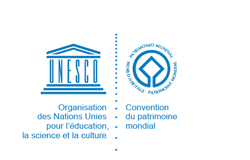The Rock paintings of Astuvansalmi at Ristiina
National Board of Antiquities
Avertissement
Les Listes indicatives des États parties sont publiées par le Centre du patrimoine mondial sur son site Internet et/ou dans les documents de travail afin de garantir la transparence et un accès aux informations et de faciliter l'harmonisation des Listes indicatives au niveau régional et sur le plan thématique.
Le contenu de chaque Liste indicative relève de la responsabilité exclusive de l'État partie concerné. La publication des Listes indicatives ne saurait être interprétée comme exprimant une prise de position de la part du Comité du patrimoine mondial, du Centre du patrimoine mondial ou du Secrétariat de l'UNESCO concernant le statut juridique d'un pays, d'un territoire, d'une ville, d'une zone ou de leurs frontières.
Les noms des biens figurent dans la langue dans laquelle les États parties les ont soumis.
Description
Rock paintings made with red ochre on a smooth, slightly oblique surface of the rock on an area 15,5 metres wide and 4 metres high, comprising about 70 different figures of moose, people, boats, etc.
The Astuvansalmi rock paintings are located on a steeply rising face of bedrock on the shore of Lake YOvesi 16 km ESE of Ristiina Church. An island called Astuva is located opposite the painted rock face on the other side of a strait at a distance of approximately 150 metres. The rock paintings are in lake setting of barren beauty with wooded outcrops of bedrock along the shores that have preserved their wilderness character almost intact.
The paintings were made on a special outcrop of bedrock resembling a human head. At present, the rock face is roughly 30 metres above the surface of the lake. The bedrock consists of several types of rocks, predominantly granite and migmatite. In many places the rock has been worn to a smooth and burnished finish by the effects of the last Ice Age.
At present, over 90 rock painting sites are known from Finland. Of these, the Astuvansalmi paintings are the largest and most diverse entity. They are also the largest ensemble of painted rock. art in Scandinavia and the regions of the hunter-gatherer cultures of the northern coniferous zone.
The paintings were executed on an area of slightly overhanging bedrock roughly 16.5 metres long and 5.5 metres high. Over 80 designs and figures painted in red ochre have been identified on the rock face. They include representations of humans, elks, and boats, as well as hand and paw prints. The paintings appear to have been made over a long period, as in many places the designs overlap.
Archaeological excavations carried out on the terrace formation beneath the paintings revealed two fragmentary, arrowheads, dating from the late Stone Age and the Early Metal Period respectively'. The arrowhead fragments beneath the painted rock face may indicate ritual archery performed at the site.
The Astuvansalmi paintings are dated with reference to the history of the Lake Saimaa water system. Owing to land uplift, the basin of the lake system has had three different discharge channels. Before the formation of the last discharge channel, the River Vuoksi (ca. 3800 BC), only the location of the uppermost painted designs could have been above water level. But after the formation of the River Vuoksi, water levels rapidly sank by 2.5 metres. Approximately 1000 years later, the terrace beneath the painted rock face emerged from the waters of the lake. The painted figures and designs are thus dated to ca. 3800-2200 BC, the period following the formation of the River Vuoksi.
The Astuvansalmi paintings have been included among the research sites of the international RockCare project funded by the Raphael and Culture 2000 programmes of the EU. In May 2001 a documentation seminar of the RockCare project was held at Astuvansalmi. The rock paintings have been documented with the aid of various photographic methods (in different lighting, with different types of film and by employing photogrammetry). Lichen, algae and moss flora at the site have also been charted in detail. Moreover, the whole painted area has been surveyed in detail with regard to damage, recording features such as fissures, clefts, peeling of the rock face etc..
A path of approximately 3 kilometres leads to the rock paintings from the Ristiina¬Puumala road (no. 4223), leaving the road near the Pien-Toijola farm museum. There are good road signs indicating the site already on the Mikkeli-Lappeenranta highway. There is a small jetty for boats in front of the painted rock face. There is also an information sign with texts in Finnish and English.


 Finlande
Finlande